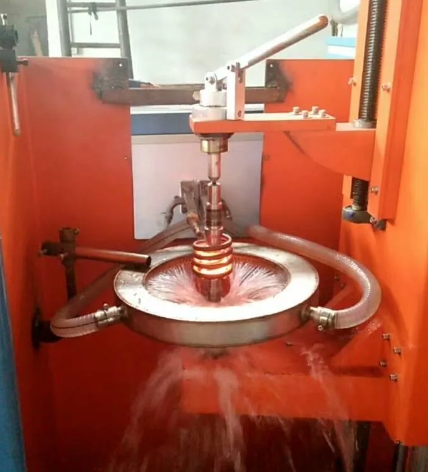- 03
- Nov
What factors need to be considered when customizing induction hardening equipment?
What factors need to be considered when customizing pakakas induksi?
1. Bentuk jeung ukuran workpiece
For large workpieces, bars, and solid materials, induction heating equipment with high relative power and low frequency should be used; for small workpieces, pipes, plates, gears, etc., high-frequency quenching equipment with low relative power should be used.
2. Jero jeung aréa workpiece diperlukeun pikeun dipanaskeun
If the heating depth is deep, the area is large, and the whole is heated, induction heating equipment with high power and low frequency should be selected; if the heating depth is shallow, the area is small, and part of the heating is heated, high-frequency quenching equipment with relatively low power should be selected.
3. The heating speed required for the workpiece
The heating speed required is fast, and the induction heating equipment with relatively large power and relatively high frequency should be selected.
4. waktos tugas kontinyu pakakas
Continue the task for a long time, and relatively choose induction heating equipment with slightly higher power.
5. The connection interval between the sensing components and the equipment
The connection is long, and even requires the use of water-cooled cables for connection, and induction heating equipment with relatively high power should be selected.
6. sarat prosés workpiece
For quenching, welding and other processes, the power of the quenching machine tool is relatively small, and the frequency is higher. For processes such as annealing and tempering, the power of the quenching machine tool is larger and the frequency is lower. Red punching, hot forging, melting, etc., need to be thoroughly For a process with good thermal results, the power of the quenching machine tool should be larger and the frequency should be lower.
7. Information of the workpiece
Among the metal materials, the higher the melting point, the higher the power, the lower the melting point, the lower the power, the lower the resistivity, and the lower the power.

